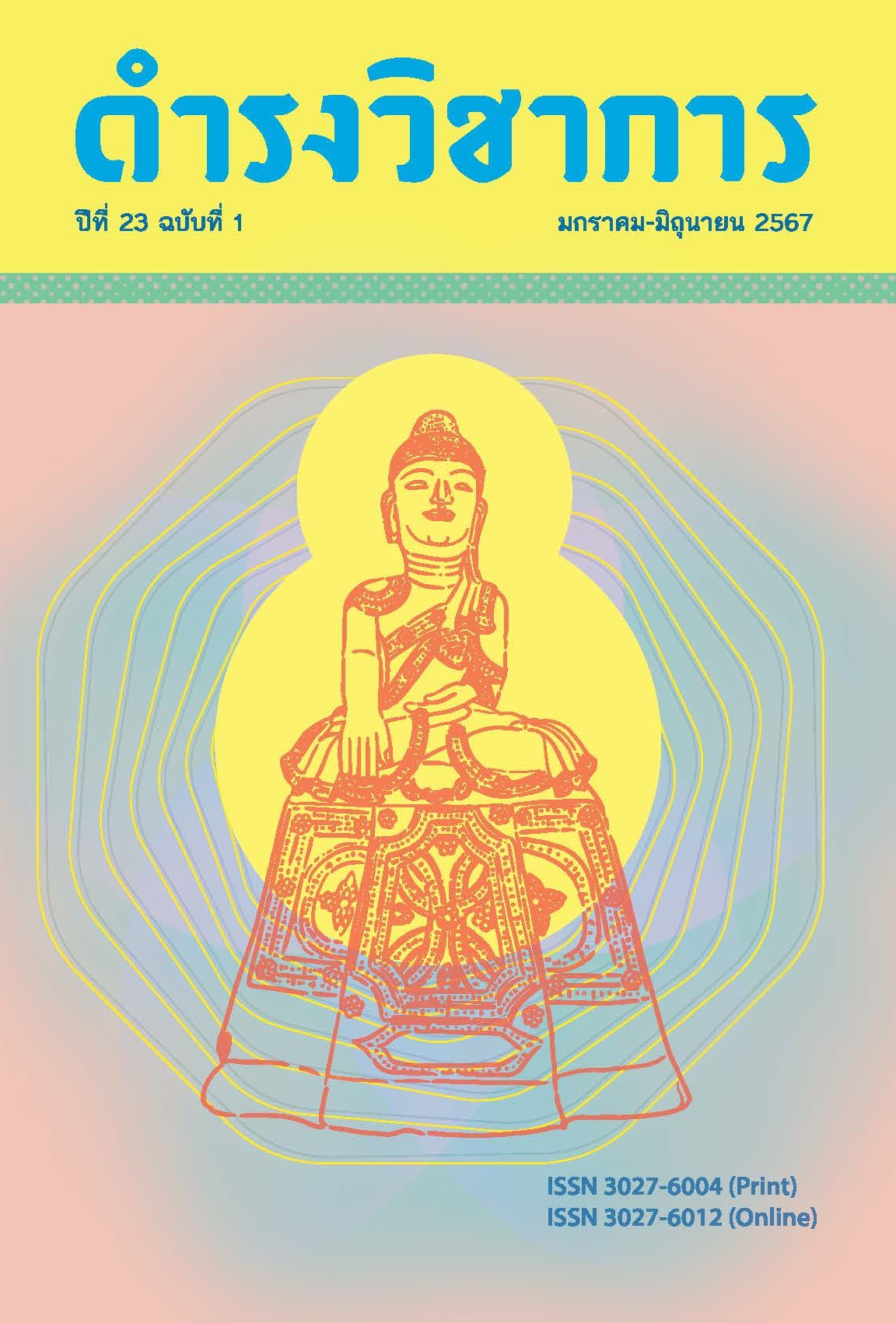Tai Yawng Tripitaka Hall in Lamphun Province: Case Study of Architectural Style and Its Evolution
Keywords:
Lue art, Kengtung art, Lanna art, Tripitaka Hall, Yawng people, architectural and decorativeAbstract
The purpose of this study is to identify the characteristics of architectural and decorative arts of Lue that appear in the Tripitaka Hall, which was built by the Yawng craftsmen in Lamphun Province, by drawing comparisons with Lue arts that appear on religious sites in Mong Yawng and Kengtung in Eastern Shan State, Xishuangbanna Dai Autonomous Prefecture, People's Republic of China and Luang Prabang township, Lao People's Democratic Republic.
The results of the study reveal that Tai Lue arts in Lamphun Province clearly appeared in the Tripitaka Hall built in the 19th century. The architecturally unique style of the Lue arts, such as shed roofs and stacked roofs, were found in the Yawng art of the Pratu pa - Ban Luk and Mae Tha - Mueang Chi craftsman groups respectively. As for the decorative arts of the building, the Lue style was found in the Yawng art of the Pa Sang, Pratu Pa – Ban Luk and Mae Tha – Mueang Chi. Architecture and Building decoration art of the Lue art that were found in Lamphun Tripitaka Hall are a reproduction of popular ideas from Lue Eastern Shan art group rather than replication from the original style. In addition, these Lue arts have influenced the local decorative arts offering the development into the typical style of each area.
References
กรมศิลปากร, ม.ป.ป. ประวัติหอไตรวัดดงฤาษี. ลำพูน: แผ่นป้ายที่จัดทำโดยกรมศิลปากรร่วมกับจังหวัดลำพูน.
เกรียงไกร เกิดศิริ, 2549. วิหารวัดบ้านแสน: วิหารร่วมแบบล้านนาพบใหม่กลางป่าเมืองเชียงตุง. กรุงเทพฯ: อุษาคเนย์.
โครงการพิพิธภัณฑ์วัฒนธรรมและชาติพันธุ์ล้านนา, 2551. ไทยอง ชีวิต ศรัทธา สล่าแผ่นดิน. เชียงใหม่: สถาบันวิจัยสังคม มหาวิทยาลัยเชียงใหม่.
จุลพงศ์ ขันติพงศ์, 2531. สถาปัตยกรรมในเมืองลำพูนที่ควรอนุรักษ์. ลำพูน: หน่วยอนุรักษ์สิ่งแวดล้อมศิลปกรรมท้องถิ่น.
จูเหลียงเหวิน และ งามพรรณ เวชชาชีวะ, 2537. ชนชาติไต สถาปัตยกรรมและขนบธรรมเนียมประเพณีไตในสิบสอง
ปันนา. เชียงใหม่: สุริวงศ์บุ๊คเซนเตอร์.
ชัยวุฒิ บุญเอนก, 2548. “วิหารไทลื้อเมืองน่าน: รูปแบบและคติความเชื่อ.” สารนิพนธ์ปริญญาศิลปศาสตรมหาบัณฑิต สาขาประวัติศาสตร์ศิลปะ บัณฑิตวิทยาลัย มหาวิทยาลัยศิลปากร.
ชาญคณิต อาวรณ์, 2557. “สัญลักษณ์พานรัฐธรรมนูญและประติมานวิทยาทางการเมืองในเขตวัฒนธรรมล้านนา พ.ศ. 2475–2490.” หน้าจั่ว ว่าด้วยประวัติศาสตร์สถาปัตยกรรมและสถาปัตยกรรมไทย 6 (6): 33–67.
วรลัญจก์ บุณยสุรัตน์, 2555. ชื่นชมสถาปัตย์ วัดในหลวงพระบาง. กรุงเทพฯ: เมืองโบราณ.
ศิริศักดิ์ อภิศักดิ์มนตรี, 2557. หอไตรล้านนา. กรุงเทพฯ: โครงการวิจัยด้านการรวบรวมและจัดเก็บข้อมูลมรดกภูมิปัญญาทางวัฒนธรรม, กรมส่งเสริมวัฒนธรรม กระทรวงวัฒนธรรม.
สืบศักดิ์ แสนยาเกียรติคุณ, 2560. ศิลปะเชียงตุง. เชียงใหม่: ร้านเจริญปริ๊นซ์เอกซ์เพรส.
แสวง มาละแซม, 2560. ประวัติศาสตร์ท้องถิ่นคนยองย้ายแผ่นดิน: การเคลื่อนย้ายและการตั้งถิ่นฐานของคนยองใน
เมืองลำพูน (พ.ศ. 2348-2445). พิมพ์ครั้งที่ 3. เชียงใหม่: วนิดาการพิมพ์.
อดุลย์ เป็งกาสิทธิ์, 2542. “การศึกษารูปแบบหอไตรในวัฒนธรรมล้านนา.” วิทยานิพนธ์ปริญญาศิลปศาสตรมหาบัณฑิต สาขาวิชาประวัติศาสตร์สถาปัตยกรรม บัณฑิตวิทยาลัย มหาวิทยาลัยศิลปากร.
สัมภาษณ์
พระครูพิบูลพัฒนพิธาน, 2562. เจ้าอาวาสวัดทาปลาดุก. สัมภาษณ์, 2 สิงหาคม.
สุทัศน์ มีแจ้, 2562. มัคนายกวัดมะเขือแจ้. สัมภาษณ์, 1 สิงหาคม.
อณุพงศ์ สูนย์พรหม, 2564. สัมภาษณ์, 10 ธันวาคม.
Downloads
Published
Issue
Section
License
Copyright (c) 2024 Damrong Journal of The Faculty of Archaeology Silpakorn University

This work is licensed under a Creative Commons Attribution-NonCommercial-NoDerivatives 4.0 International License.
บทความนี้เป็นผลงานของข้าพเจ้าแต่เพียงผู้เดียว และ/หรือเป็นผลงานของข้าพเจ้าและผู้ร่วมงาน ตามชื่อที่ระบุในบทความจริง และเป็นผลงานที่มิได้ถูกนำเสนอหรือตีพิมพ์ที่ใดมาก่อน


